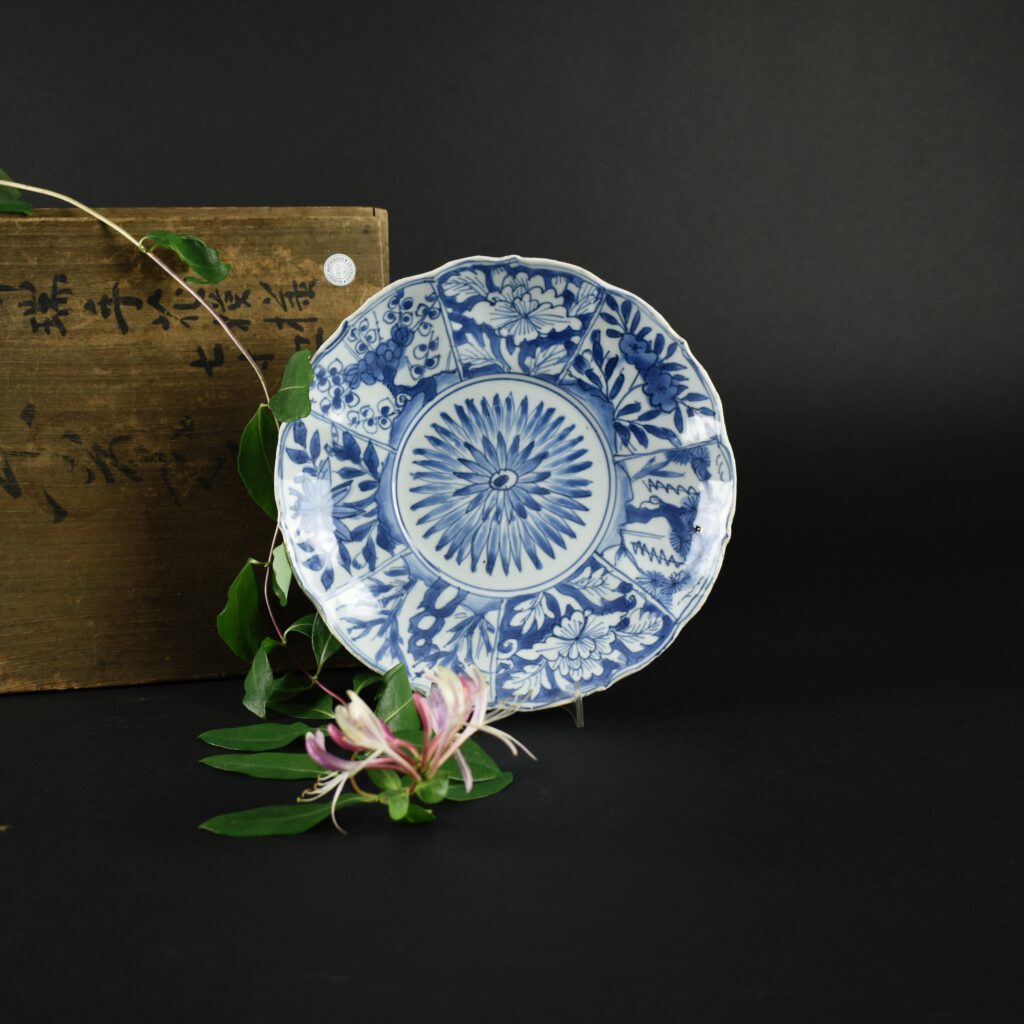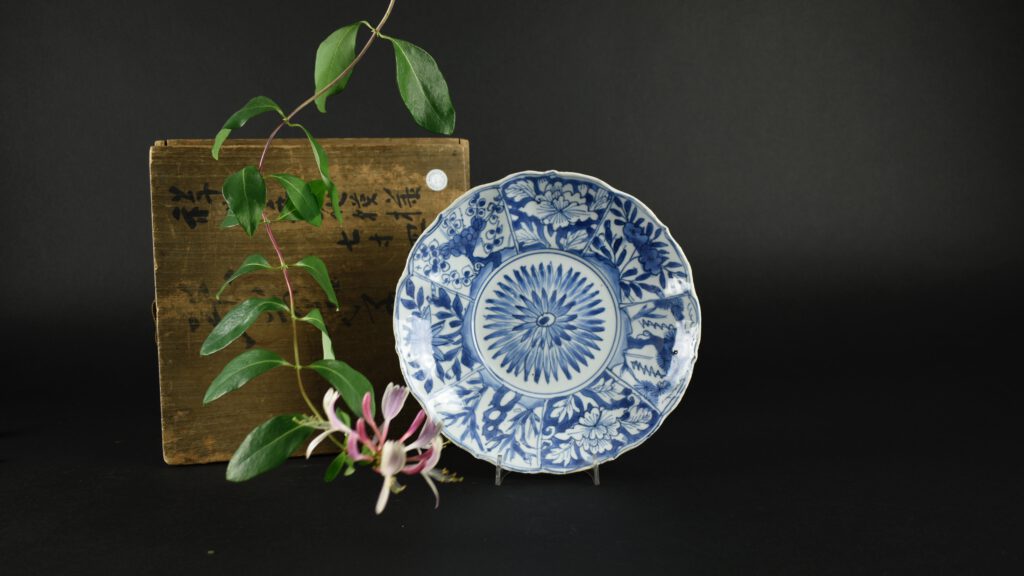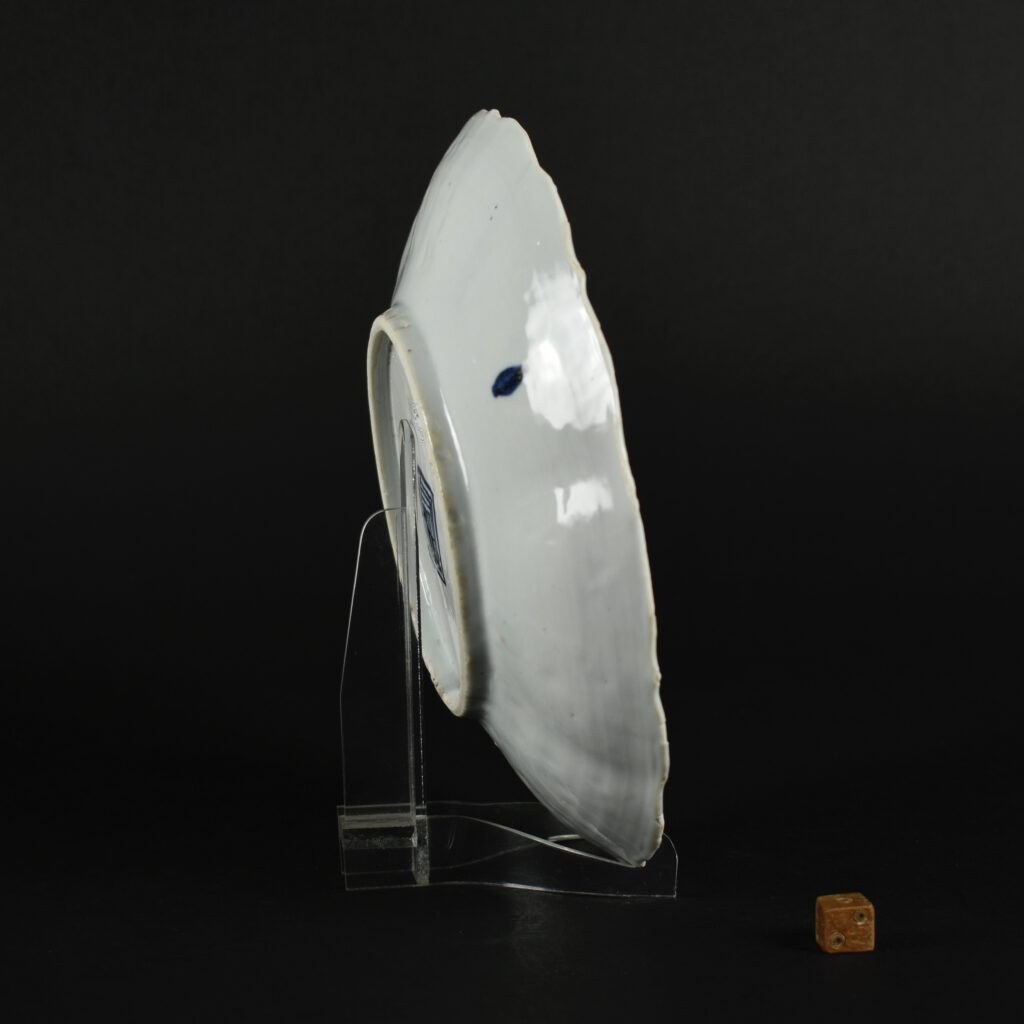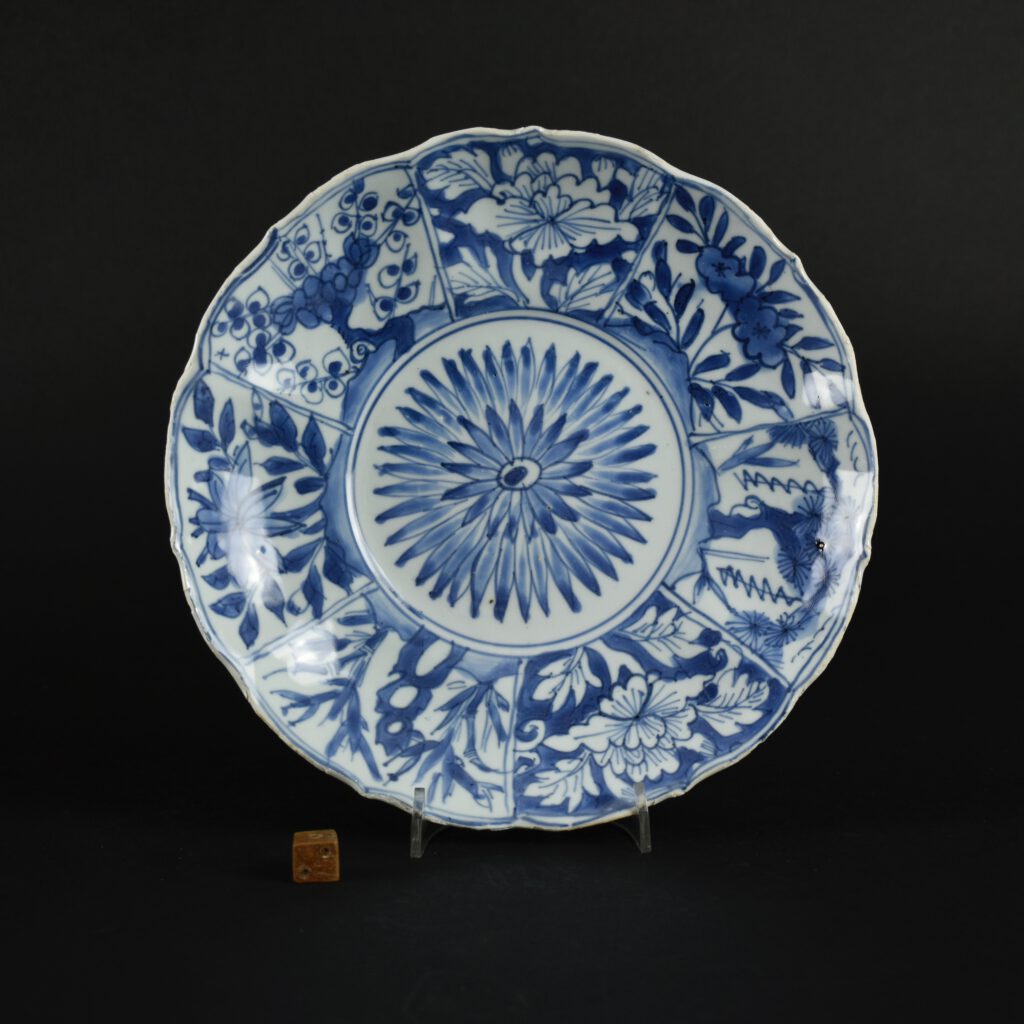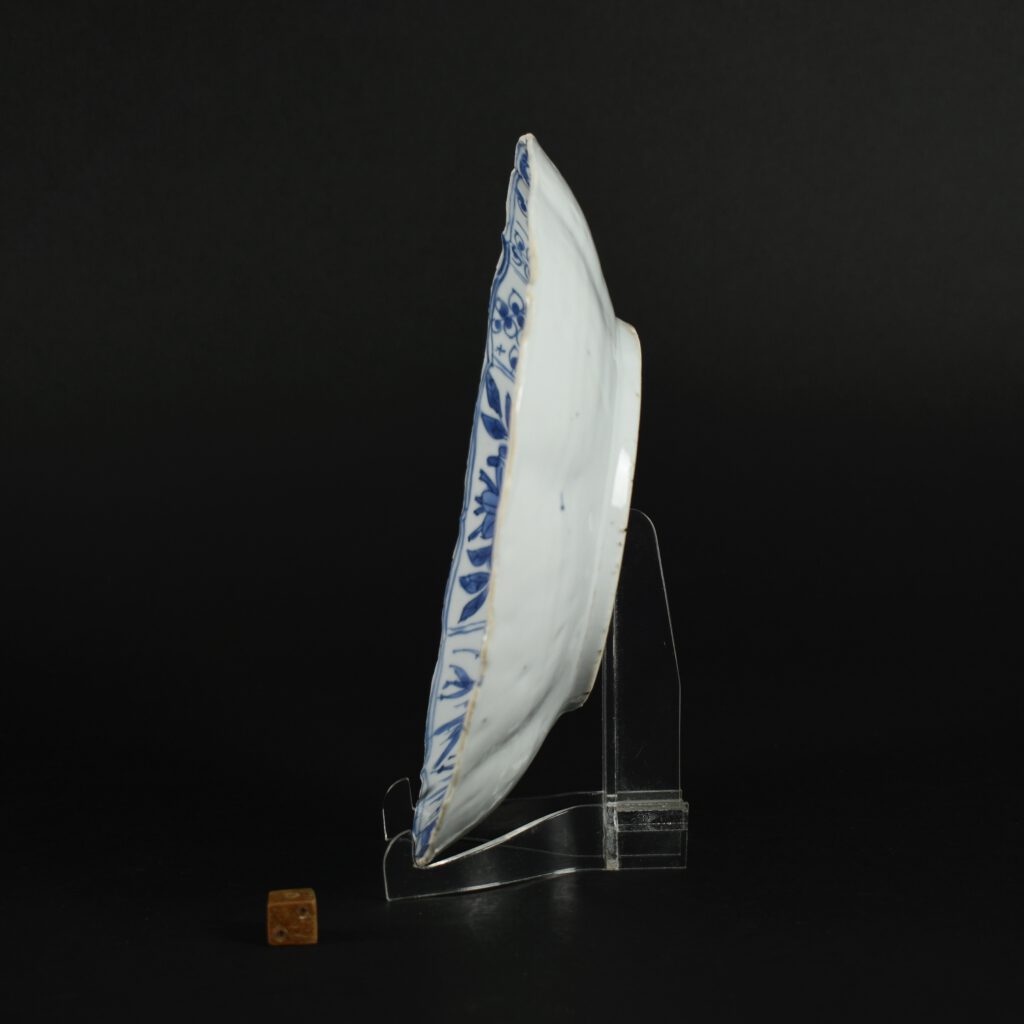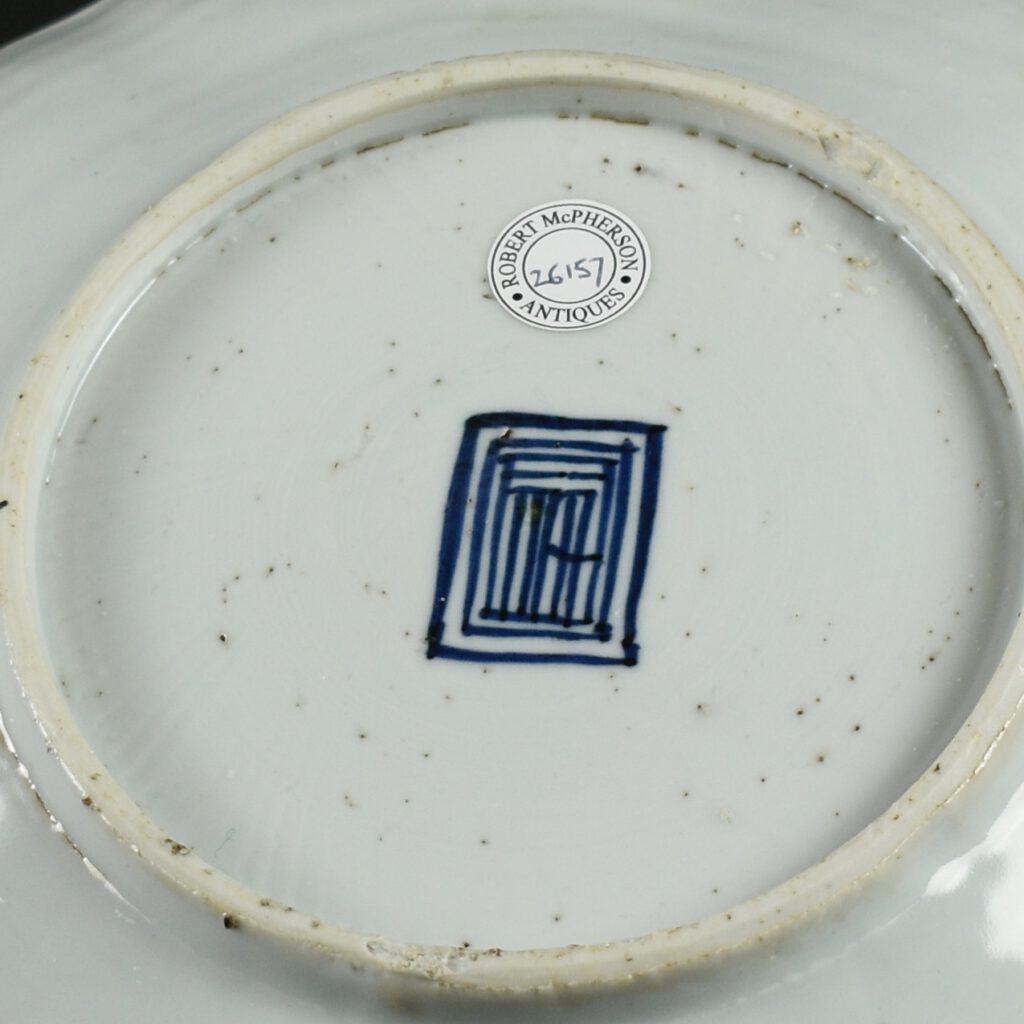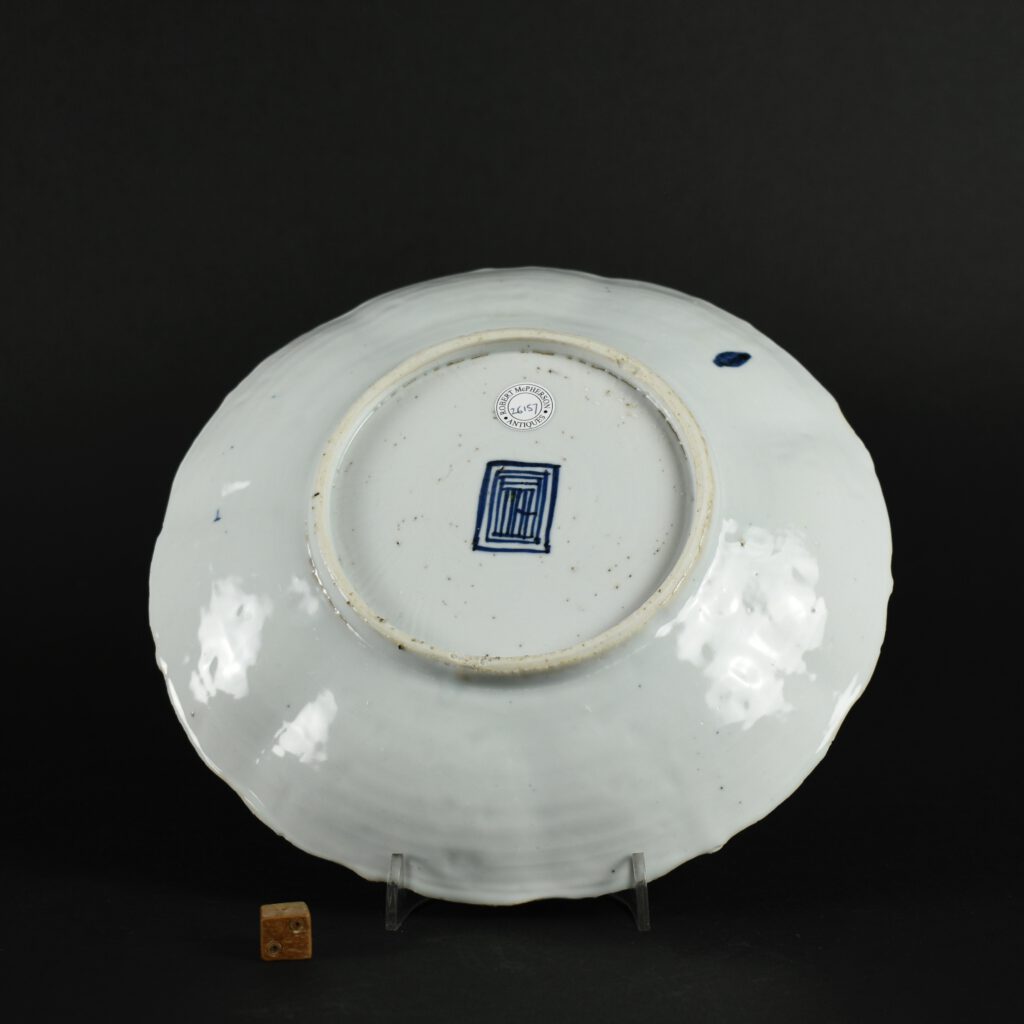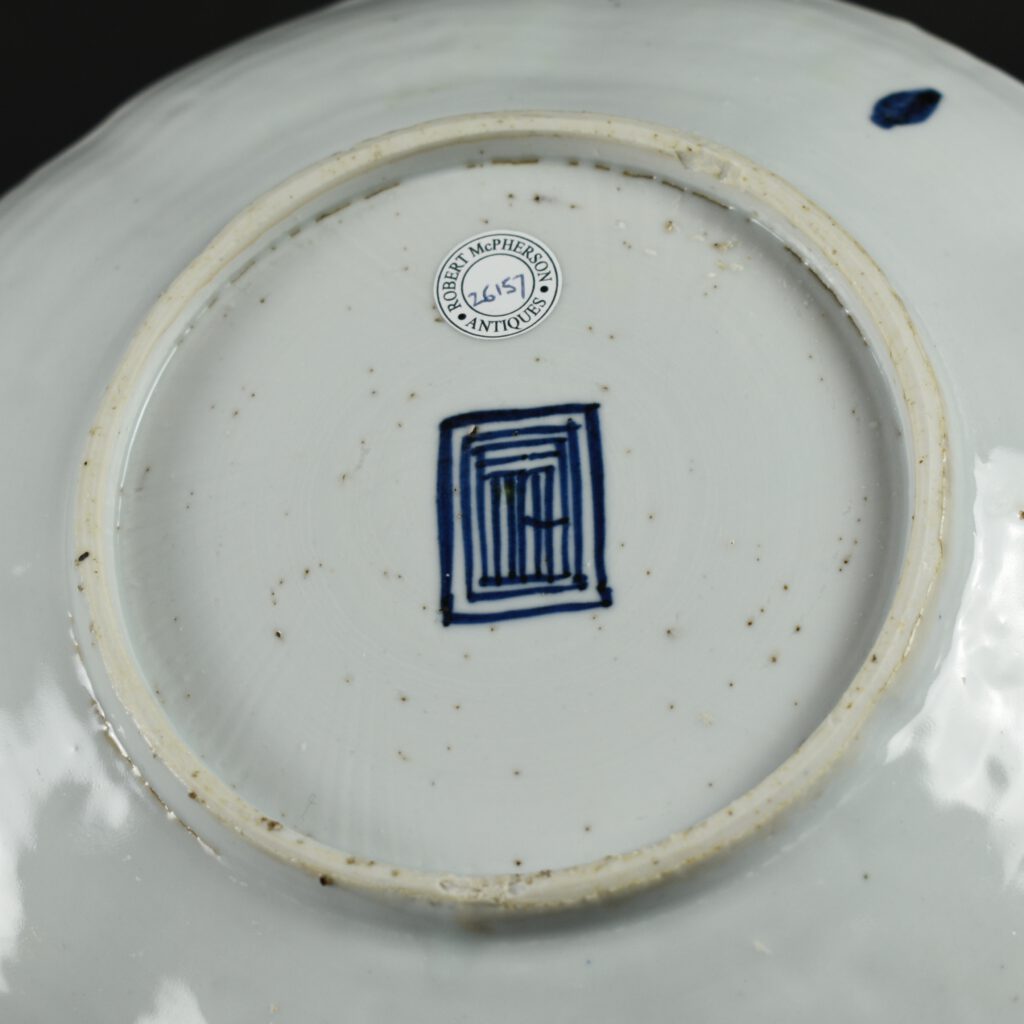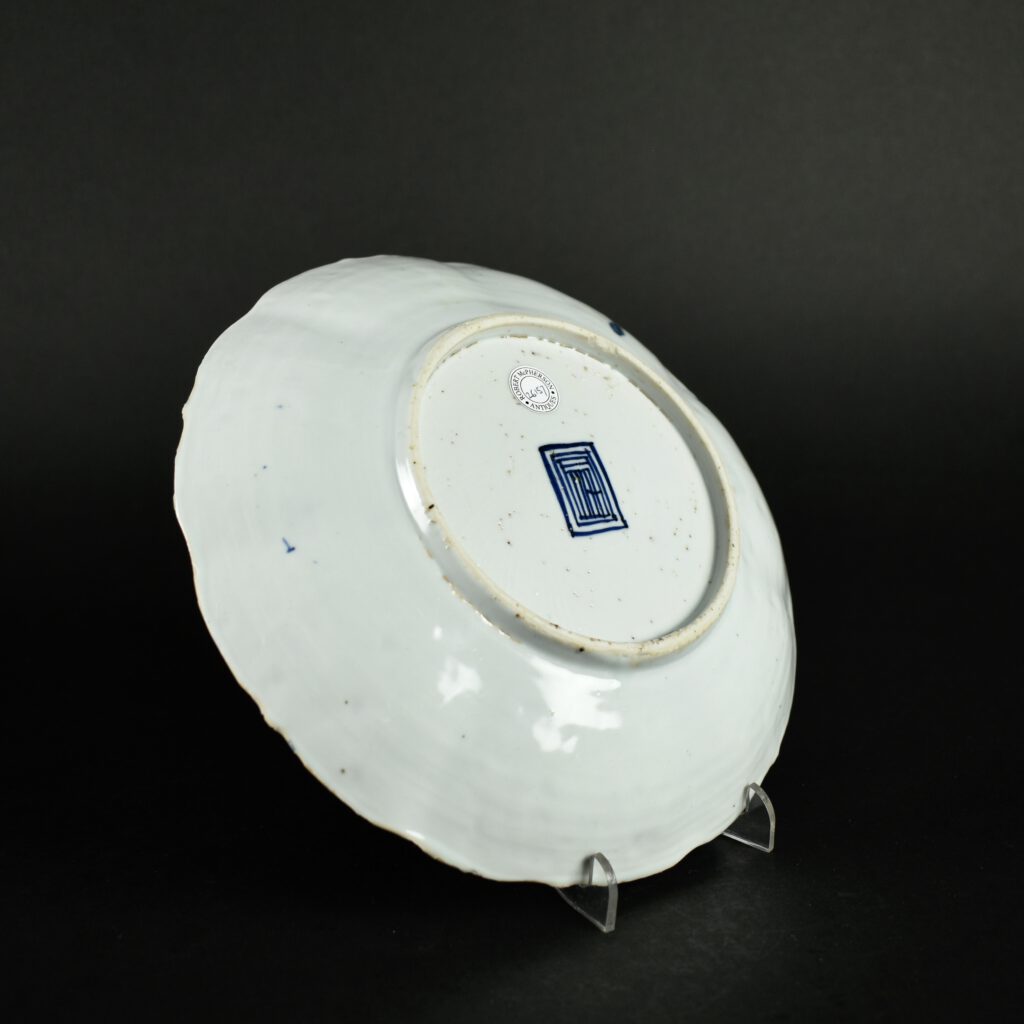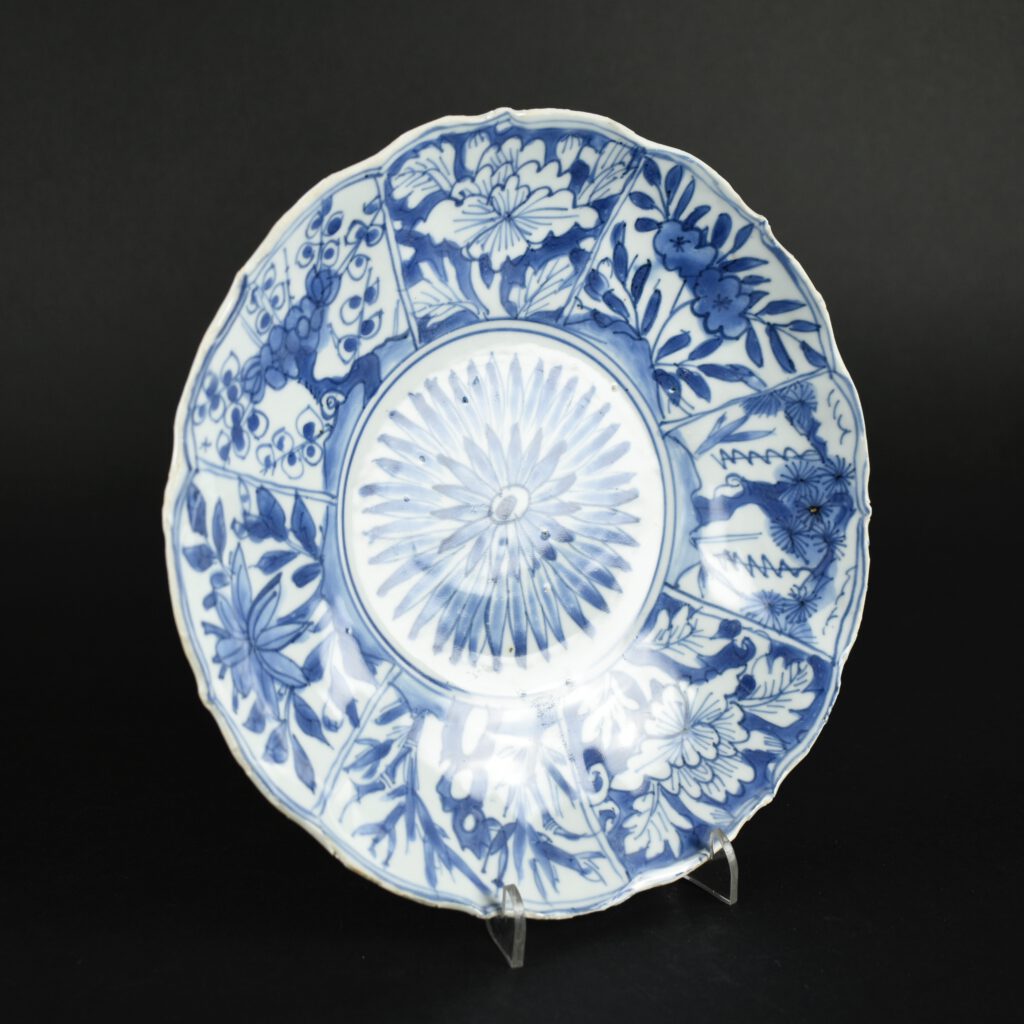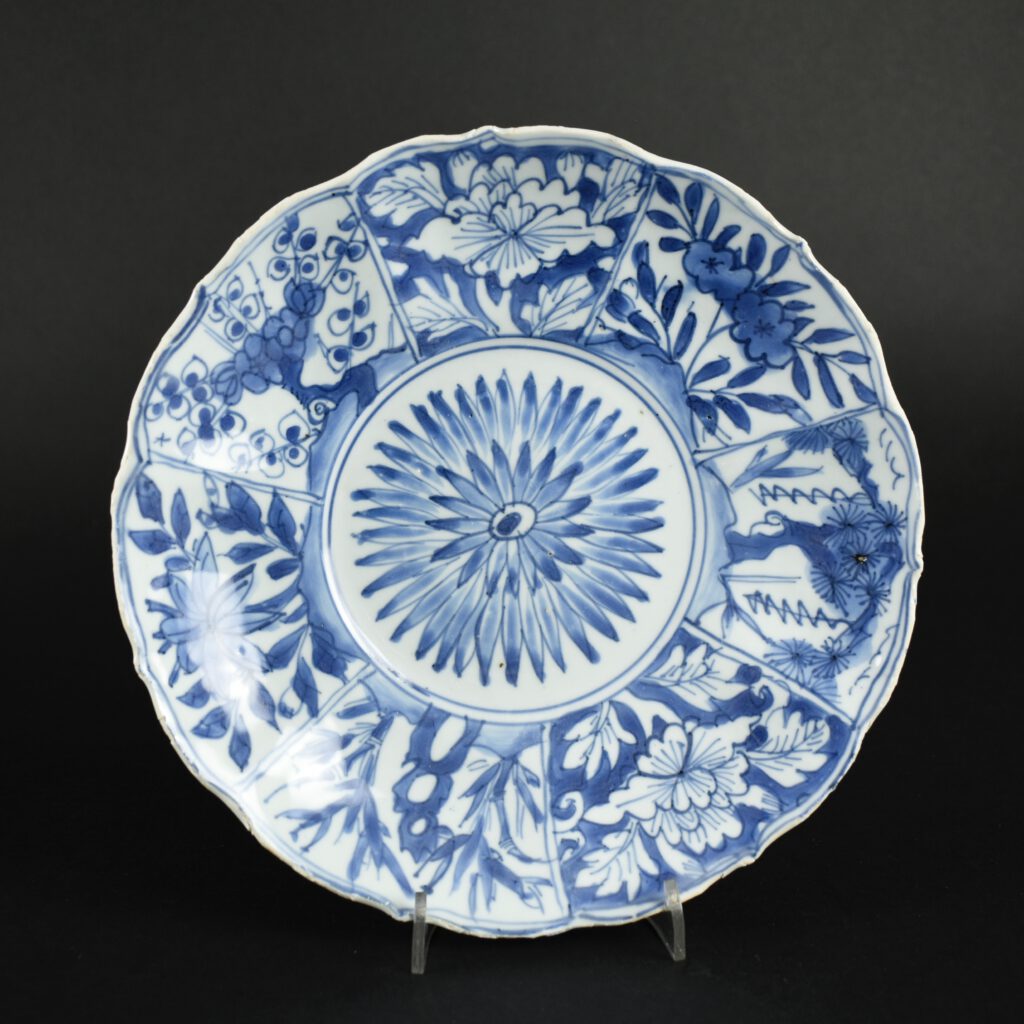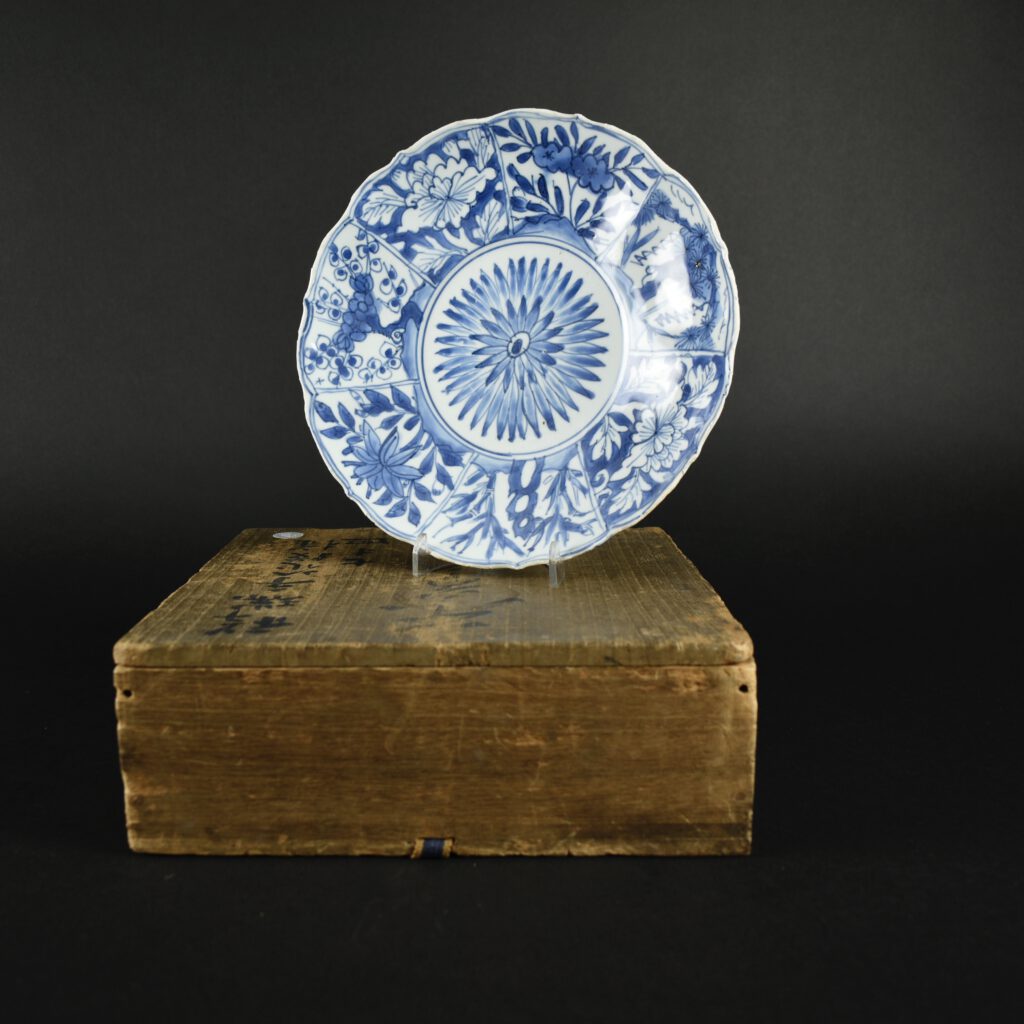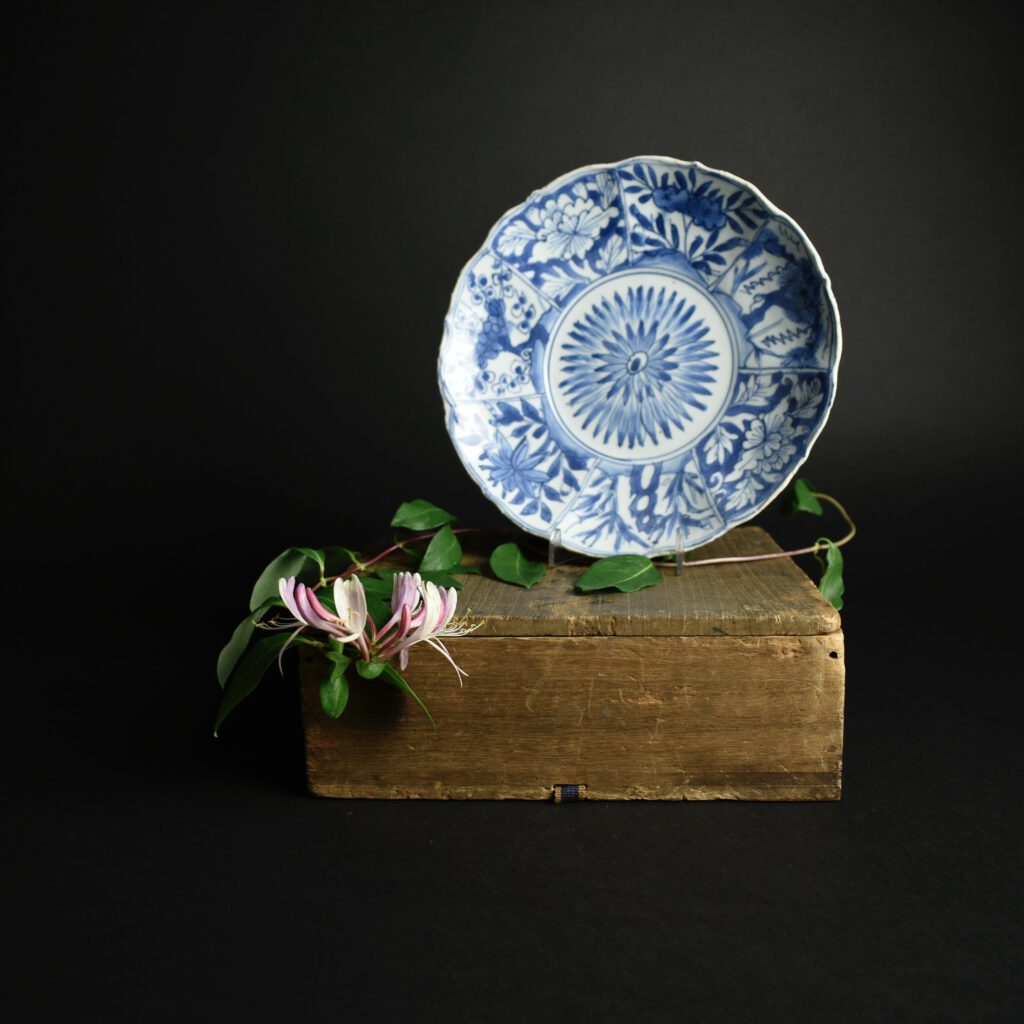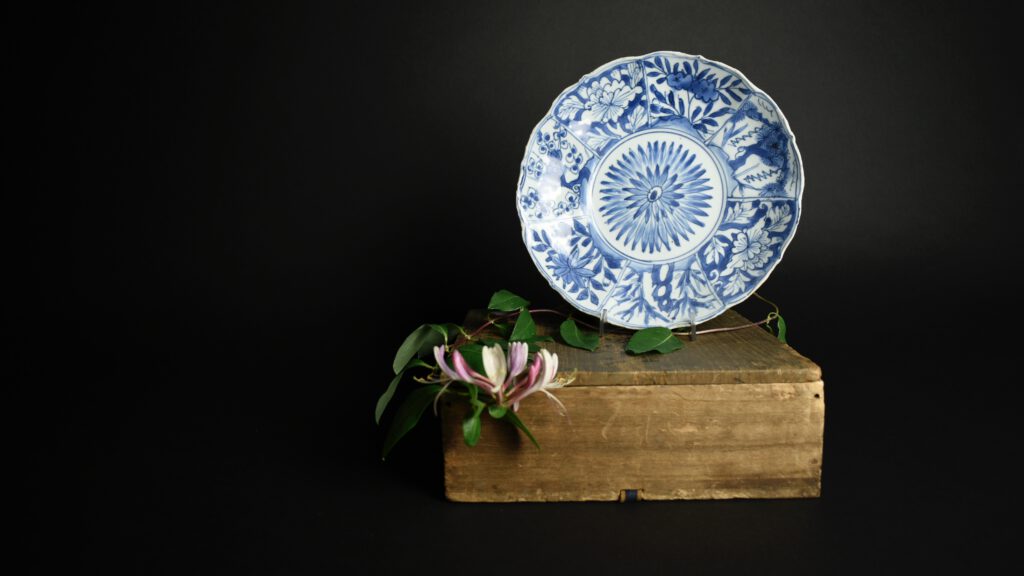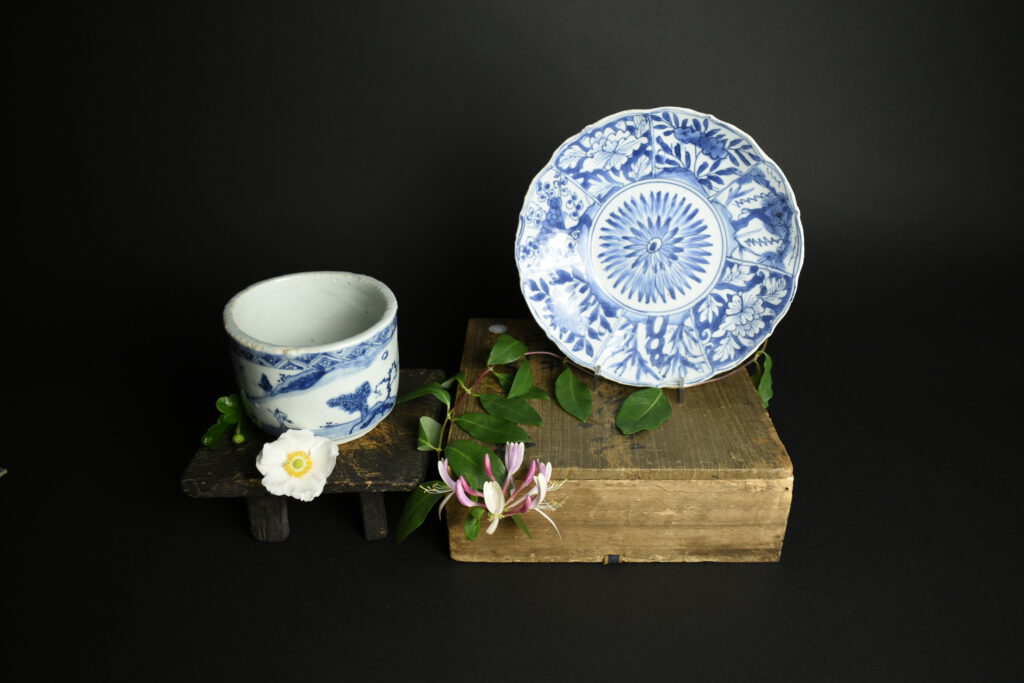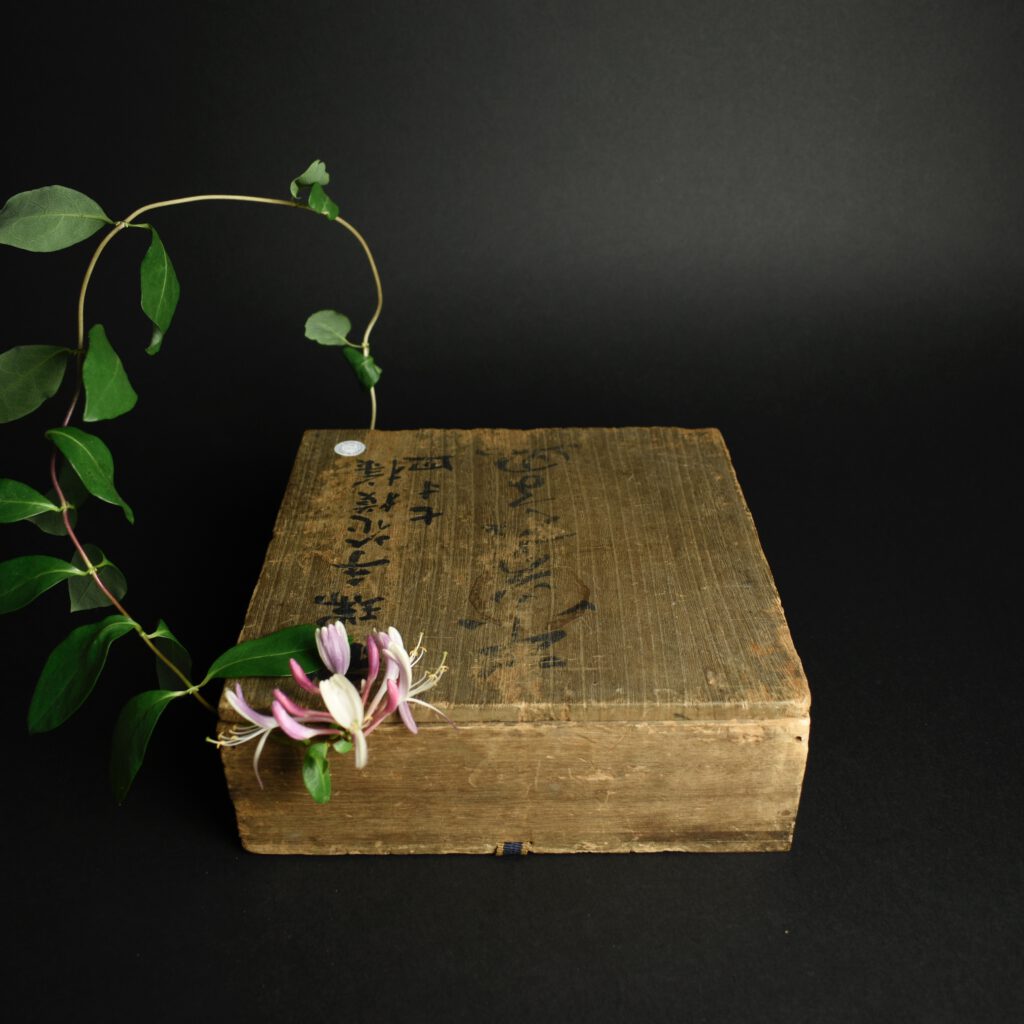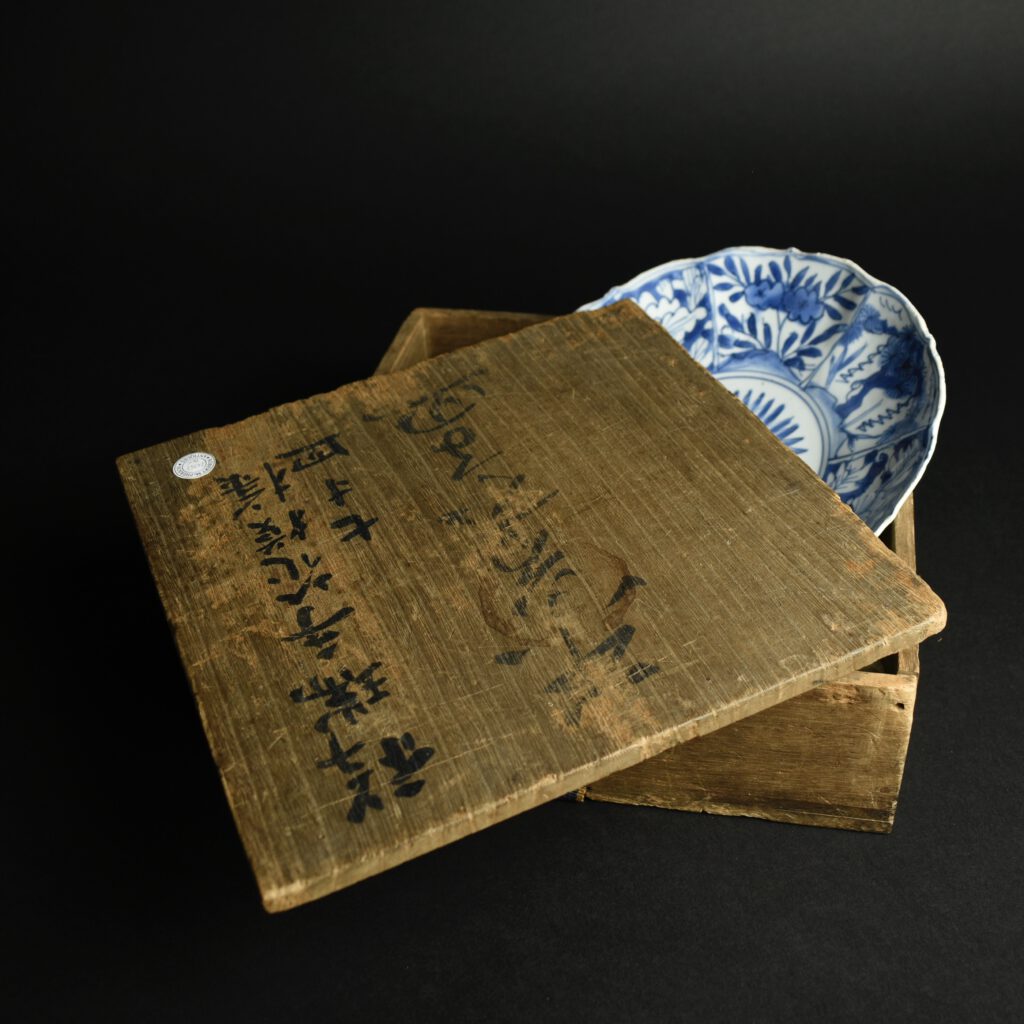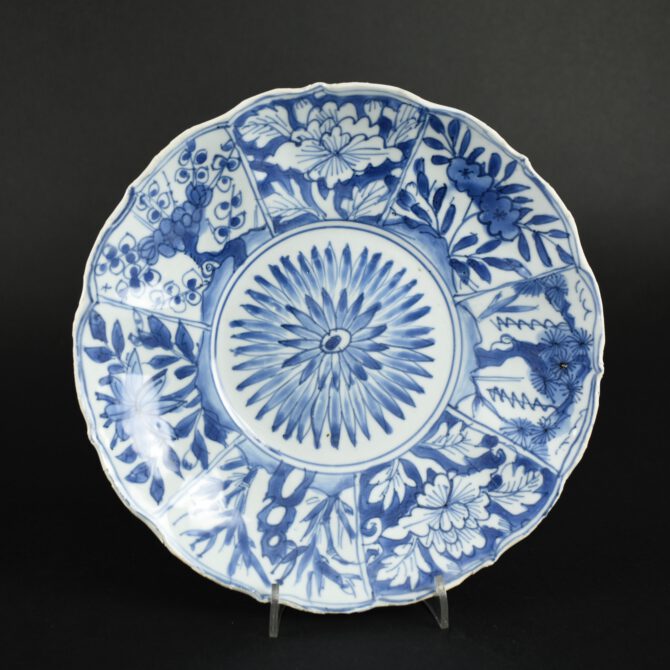
A Late Ming Blue and White Porcelain Dish for the Japanese Market
A Late Ming, Transitional Porcelain Dish for the Japanese Market, Chongzhen Period 1628-1644. This large barbed rim, thickly potted, blue and white porcelain was made for the kaiseki (Tea ceremony meal). The design consists of a central chrysanthemum, the cavetto consists of panels of plants. There are two panels of flowering tree peony against a blue ground as well as panels of pine, bamboo, prunus and two panels I can’t identify. The back is painted with a single blue design, this doesn’t appear to be random mark but rather a deliberate design, perhaps imitating an accident. The Japanese loved the imperfect and I think they requested faults to suit their aesthetic sensibilities. The rim is fritting Mushikui (insect-nibbled). Together with an inscribed box.
SOLD
- Condition
- The rim is fritting Mushikui (insect-nibbled).
- Size
- Diameter 20.7 cm (8 1/4 inches)
- Provenance
- N/A
- Stock number
- 26157
Information
Ming Porcelain for Japan :
During the late Ming Period the Chinese made a large among of porcelain for the Japanese market, it was made from the Wanli period (1573-1620) and ended in the Chongzhen period (1628-1644), the main period of production being the 1620`2 and 1630`s. The Ming porcelain objects produced were made especially for the Japanese market, both the shapes and the designs were tailored to Japanese taste, the production process too allowed for Japanese aesthetics to be included in the finished object. Its seams firing faults were added, repaired tears in the leather-hard body were too frequent to not, in some cases, be deliberate. These imperfections as well as the fritting Mushikui (insect-nibbled) rims and kiln grit on the footrims all added to the Japanese aesthetic. The shapes created were often expressly made for the Japanese tea ceremony meal, the Kaiseki, small dishes for serving food at the tea ceremony are the most commonly encountered form. Designs, presumably taken from Japanese drawings sent to China, are very varied, often using large amount of the white porcelain contrasting well with the asymmetry of the design.

